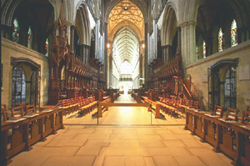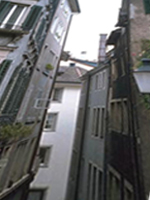Structuring the 2D Field
All of the elements on the screen and forces within the screen operate together. You have to control a number of aspects in the shot to achieve the result you want.
Elements to consider are:
- Dimension of element on the screen, their relative size
- Orientations--whether the elements in the field are arranged to convey vertical or horizontal orientation
- Location--center, side, top and how screen magnatism interacts with placement
- Color and light (which we'll get lot later)
Counterweight. How are you balancing elements against each other and the frame?
Vector forces. How are you managing the distributution and competion among vectors? (Make sure to consider how vector is affected by leadroom and noseroom.)
Balance. How are you balancing the horizontal and vertical elements of the image?
Stabile—symetrical balance, sides of the frame equally balanced in terms of weight and vector

Neutral—asymmetrical
balance, weight and vector are oriented to one side (or top/bottom)

Golden—asymmetrical
balance in a specific proportion of 2/5 to one side and 3/5 to the other.

Labile—asymmetrical
balance with weight and vector creating instability in the image.
 |
 |
|
Here the alley between buildings is presented with neutral balance. |
The perspective used here creates a labile balance—labile is generally used to de-stablaize a scene and the viewer. |
Framing Objects
How are you going to organize the elements in the frame into a composition that maximizes the effects of relationships and/or enhances the frame's ability to convey information and emotional stares?
In addition to considering weight and vector, also think about the clustering of people and objects and how viewers are helped and hindered in perceiving relationships.
Make sure to think about logical closure and natural dividing lines. Don't cut things and people off at odd points.
Think in terms of the "Rule of thirds"
